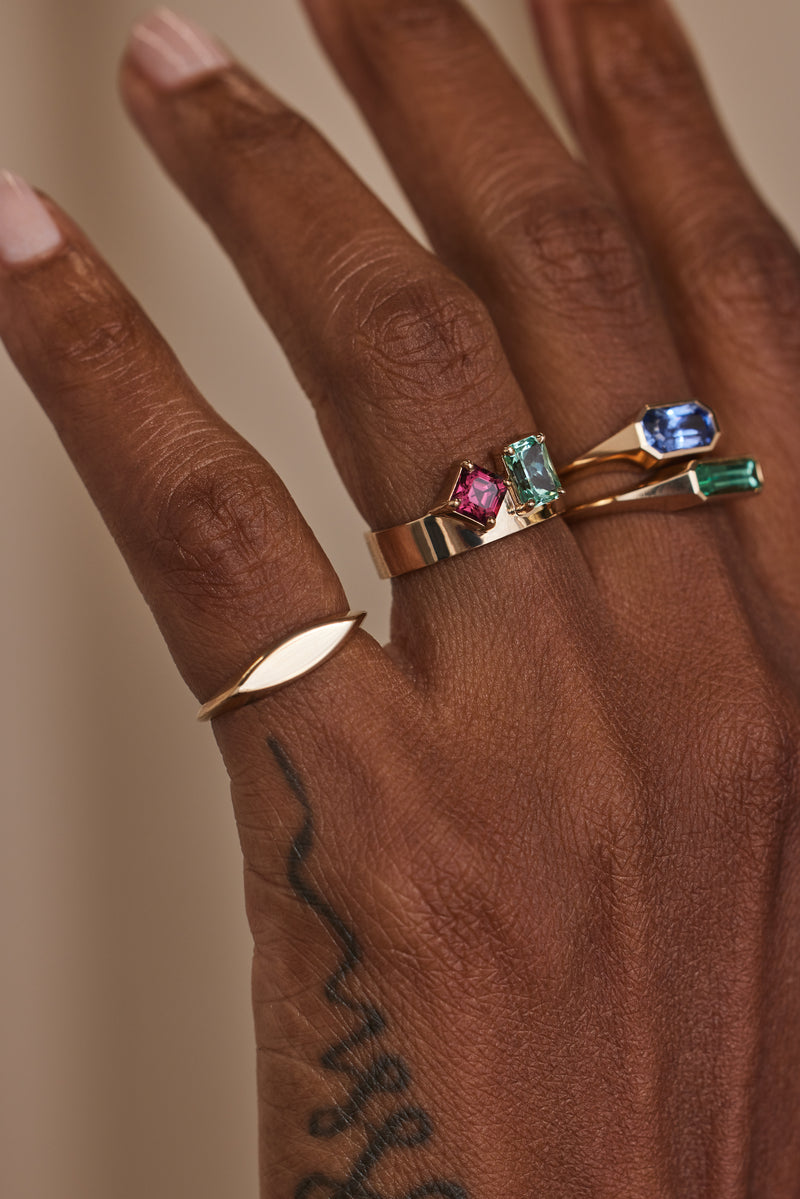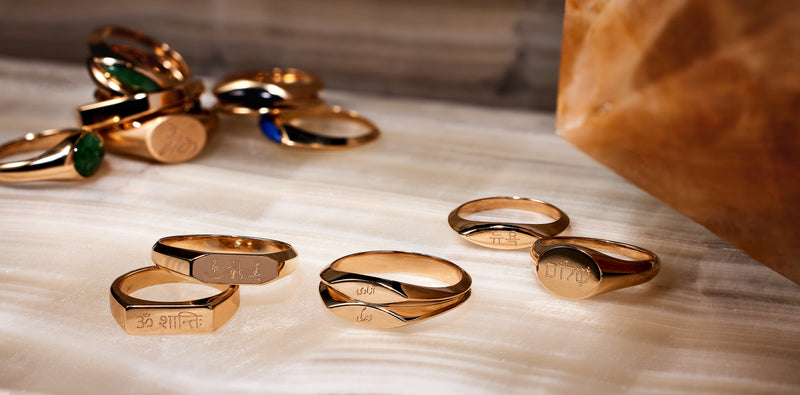Recycled Diamonds
- Posted on 04.21.23
- DIAMONDS
Education is a key part of maintaining sustainable practices. Without knowledge we wouldn't be able to make informed decisions for ourselves, the environment and future generations.
Recycled diamonds are an incredible resource that already exists! Here is a quick guide to recycled diamonds, their counterparts and how they move through the jewelry industry and affect ecosystems.
WWAKE’s focus is on recycled diamonds to reduce our participation in large scale commercial mining. Our passion is bringing value to the many diamonds that are already circulating in the secondary market and are often overlooked or seen as less valuable by traditional standards. Our recycled diamond program includes recycled modern diamonds, recycled antique diamonds, and recycled heirloom diamonds for custom clients.
 In order to fully understand the different processes behind sourcing diamonds, it’s important to understand the terminology as well. Here are some common terms used to describe recycled diamond sourcing:
In order to fully understand the different processes behind sourcing diamonds, it’s important to understand the terminology as well. Here are some common terms used to describe recycled diamond sourcing:
- First, recycled and reclaimed are used interchangeably when referring to diamonds.
- Post consumer recycling refers to diamonds that have been removed from worn jewelry.
- Pre-consumer recycling refers to diamonds that are removed from jewelry that was never worn, or deadstock jewelry.
Antique diamonds are diamonds that were cut before 1930. The tools used to cut diamonds before 1930 are not the same tools we use in modern diamond cutting. Due to this, the diamonds tend to have a more unique and vintage appearance with fewer, but larger facets that reflect light differently. In fact, many antique diamonds were cut to reflect candlelight versus bulb lighting. Antique diamonds can also be recut and polished into more modern cuts.
Recycled modern diamonds are diamonds that were cut after 1930 and have since been removed from their original setting. At this time, diamond cutting moved towards maximizing the amount of facets in the diamond. Recycled modern diamonds are precision cut or machine cut which optimizes the diamond’s sparkle and makes them appear brighter.
Antique diamonds and recycled modern diamonds both receive GIA certifications just like newly mined diamonds. Recycled diamonds were still at one point mined, making them just as finite and precious as newly mined diamonds.
Heirloom diamonds come from our clients’ personal or family jewelry collections. Typically, the diamond is set in a piece of jewelry that has been passed down from another family member, maybe a grandmother's engagement ring or a mother's necklace. The piece might be too worn and thin or the style might feel a bit outdated and need a refresh. Our custom team will work with your diamond to design a signature WWAKE piece.
In general, WWAKE’s focus is on what makes a diamond beautiful beyond the GIA standards of “perfection”. The stones' story, individual cuts, and unique colors are all factors that we believe bring further value to the diamonds in the recycled market. Contrary to what some might tell you, we believe that there is no right or wrong way to pick a diamond. You know you've found something special when the stone draws you in and invites you to look deeper.

Sourcing recycled diamonds brings value to the many diamonds that are already circulating in the secondary market and therefore have a lower environmental impact compared to other diamond sources. This helps reduce participation in commercial mining practices and creates a model example for using recycled diamonds as a small, growing, company in today’s market.
Of course, sourcing recycled diamonds does not come without challenges; tracing many post-consumer recycled diamonds can be difficult. We are fortunate to work with diamond dealers who specialize in antique and recycled modern cut diamonds, and who have extremely stringent quality standards when it comes to accepting diamonds for WWAKE. Their highly specialized training enables them to identify, with the eye, between new and old diamonds.
The recycled market does not have the same depth of availability of diamonds that the new diamond market does, making recycled diamonds harder to source consistently when looking for specific shapes or sizes. This can lead to a longer sourcing time versus newly mined diamonds that can be sourced within days. However, we believe that the hunt and wait are worth it when you consider the larger effects that newly mined or lab-grown diamonds have on the environment.

Now for some more terminology:
Newly mined diamonds refers to a stone mined within the last 20 years that has not been circulated in the recycled market. Mined diamonds also have a high environmental impact, displacing thousands of tonnes of rock and not to mention the impact on the neighboring communities. There are centuries of conflict within the jewelry industry fueled by the exploitation of labor and resources from the Global South for the benefit of the Global North.
Conflict diamonds, sometimes called blood diamonds, are defined by the Kimberley Process (KP) as ‘rough diamonds used to finance wars against governments around the world’. The KP is a commitment to remove conflict diamonds from the global supply chain. However, the KP standards are often not stringent enough. Their definition of conflict diamonds does not include other types of harm such as human rights abuses, environmental impacts, and further systems in the diamond industry such as cutting and processing. It’s important to think about the larger ecosystems and the people that are harmed when discussing conflict diamonds.
While only 3% of the diamond industry is still considered conflict diamonds, we are focused on finding alternative channels that are plentiful in the secondary market and support more zero-impact initiatives.
Lab-grown diamonds are created through a controlled technological process. They are made from the same material as naturally occurring diamonds and share chemical and physical properties.
This is a newer industry and it's unclear whether lab-grown diamonds are truly sustainable or as ethical as their marketing claims them to be. The lab-grown diamond process requires high temperatures and therefore more energy resulting in a larger carbon footprint. A past study has also found that lab-grown diamonds have a higher carbon footprint in comparison to newly mined diamonds.

While focusing on the environmental impacts of sourcing is important, there are many other factors of sustainability. It’s important to consider the long term value of items so that we do not simply replace them when we no longer need them. Lab-grown diamonds don't hold a definite long-lasting value like natural diamonds do. Additionally, there is a lack of transparency in how these companies are financed; we want to make sure that we’re not funding any money laundering projects and, instead, are working to put our company capital into concrete, positive, changes to the existing industry. Sustainability involves the environment, longevity, and most importantly people.
Sustainability and humanitarian issues are not our specialties, but we care about supporting ethically made practices. This includes where our jewelry comes from and what impact it makes.
We believe there are enough diamonds that already exist in the jewelry industry that have their own one-of-a-kind molecular composition, unique cut and color, and, most importantly, their own origin story.

